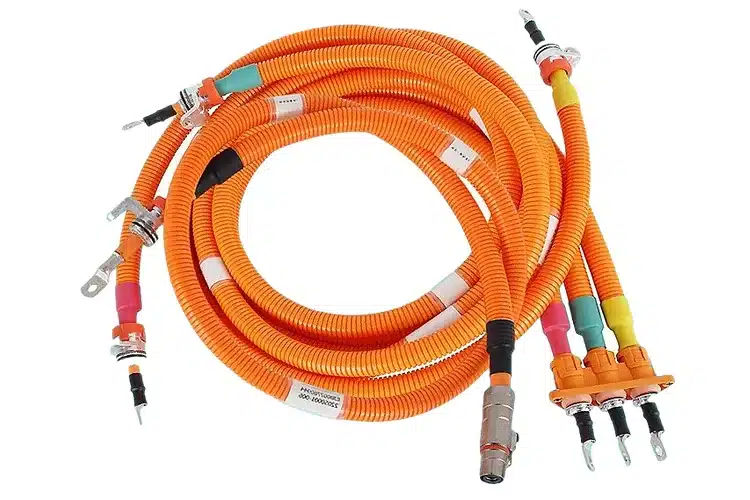
Energy storage wire harnesses ensure efficient and reliable power transmission across various industries, including electric vehicles (EVs), aerospace, and military applications. These harnesses connect multiple batteries, facilitating seamless energy storage and distribution.
Engineering and Manufacturing Considerations
To ensure the reliability and safety of energy storage wire harnesses, designers must account for factors such as power requirements, voltage levels, current capacity, temperature variations, and environmental conditions. Achieving this necessitates comprehensive electrical and mechanical analyses, the use of high-quality materials, and adherence to stringent manufacturing processes.
Components of Energy Storage Wire Harnesses
An energy storage wire harness typically comprises several key components:
- Batteries: Common types include lithium-ion, nickel-metal hydride, and ultracapacitors.
- Connectors: These facilitate secure connections between batteries and other system components.
- Wires: Made from copper and aluminum, they conduct electricity efficiently.
- Protection Devices safeguard the system against overcharging, deep discharge, and short circuits.
- Control Circuits: They monitor battery health and manage charging and discharging cycles to prolong the lifespan and ensure user safety.
Advantages of Energy Storage Wire Harnesses
Implementing energy storage wire harnesses offers several benefits:
- Enhanced Energy Efficiency: They optimize energy use, reducing waste and improving overall system performance.
- Reduced Environmental Impact: Improving energy efficiency helps lower fuel consumption and decrease CO₂ emissions.
- Improved Performance: Electric vehicles offer enhanced driving range and reliability.
- Increased System Reliability and Safety: In aerospace and military applications, robust wire harnesses are essential for mission-critical operations.
Key Considerations in Automotive Energy Storage Harness Design
When designing wire harnesses for automotive energy storage systems, several factors are paramount:
- Wire Gauge Selection: Choose wire gauges based on the current load requirements. Select wires that can handle the expected load without excessive heating for continuous high-current applications.
- Color Coding: Implement standardized color codes for wires to simplify maintenance and troubleshooting, ensuring that each circuit is easily identifiable.
- Physical Properties: Consider the wire’s flexibility, insulation material, and resistance to environmental factors, including temperature extremes and moisture.
- Bundling Techniques: Utilize bundling methods like half-fold packing and apply coatings or dry lugs to enhance cable retention, insulation, and protection against physical damage.
Conclusion
Energy storage wire harnesses are integral to the efficient and safe operation of energy storage systems across various sectors. By focusing on thoughtful design, quality materials, and adherence to best manufacturing practices, energy efficiency, system reliability, and user safety can be significantly enhanced. Consulting with experienced professionals in the field is recommended for tailored solutions and expert guidance on energy storage wire-harvesting.

Apple Liu is Romtronic’s Marketing Manager, focusing on business growth across the Asian market. With a background in International English and eight years of sales experience in the electronic cable and harness industry, she brings both in-depth industry knowledge and a global outlook to her role.
In addition to leading market strategy, Apple also oversees content development and editorial work—crafting clear, engaging messaging that reflects Romtronic’s values and technical strengths. She is passionate about digital engineering and is committed to strengthening Romtronic’s brand presence and innovation in a competitive global landscape.


